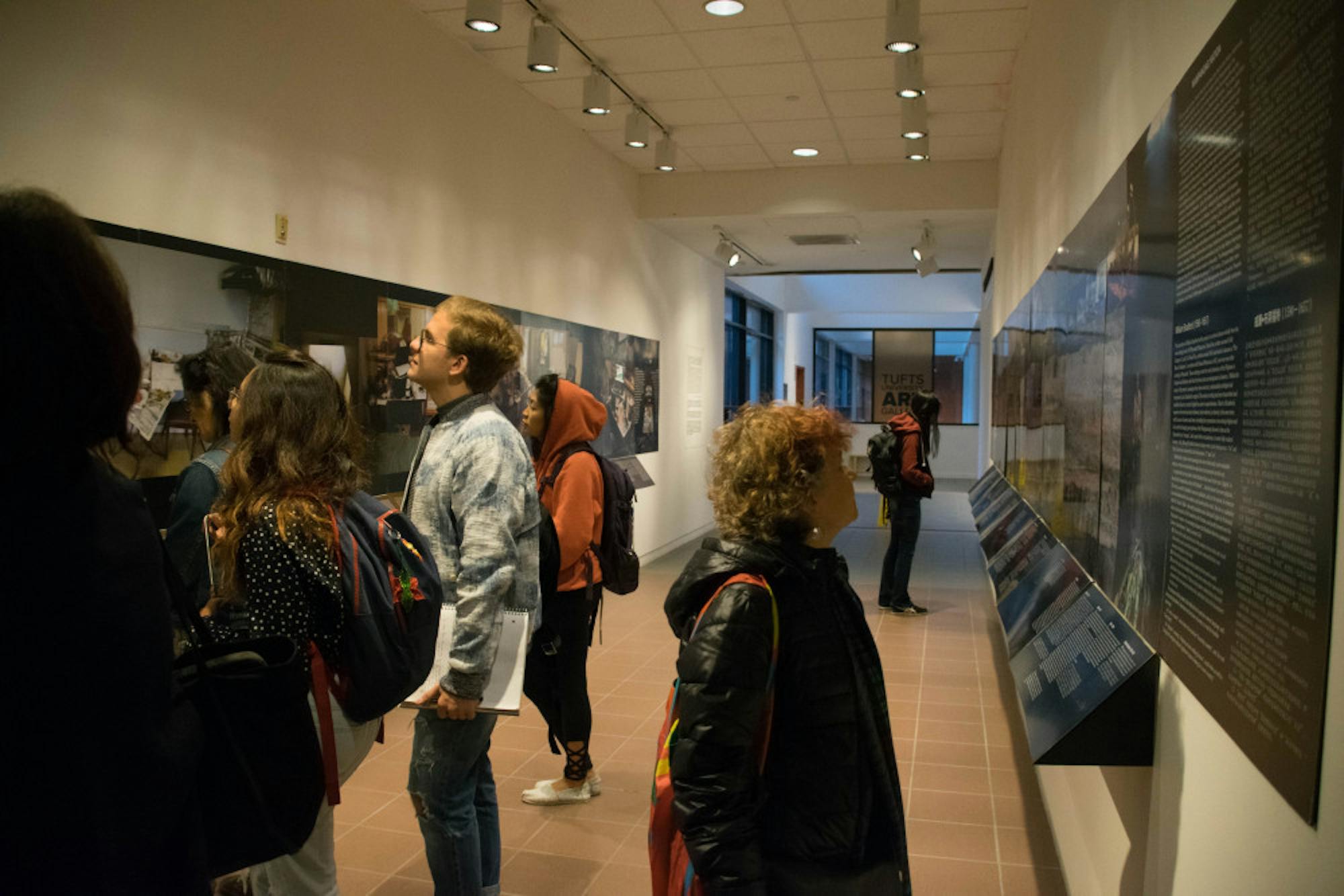In the upper-right-hand quadrant of her painting Untitled (2010s), artist Julie S. Graham scrawled, in feathery pencil, a quote from German poet Rainer Maria Rilke: “Fraction of freedom compromised by the presence of risk; trapped by whatever’s in us that evens the odds of the loaded outside.”
That painting is one of many comprising the first comprehensive retrospective of Graham’s work, titled “Stack, Layer, and Arrange,” which is currently on display in the Tufts University Art Galleries. The show will run until Sept. 29; a guided tour with guest curatorMartina Tangawill take place on Sept. 22.
Graham was a fixture of Boston's artistic community. Over the course of her prolific career, exhibitions of her works graced a laundry list of galleries and museums across the city. She also taught workshops in Venice, Vermont and the Virgin Islands. Here at home, though, Graham has another claim to fame: She served on the Painting faculty at the School of the Museum of Fine Artsat Tufts for nearly 30 years before her death in 2018.
“Stack, Layer, and Arrange” traces the full arc of Graham’s career, from her most recent sculptures to paintings which date back to the 1970s. In preparation for this exhibition, Tanga personally sorted through the remains of Graham’s studio, identifying the veins of inspiration flowing through Graham’s work. “She has always looked around her for inspiration,” Tanga told WBUR. “At her lived environment, the urban landscape, the natural landscape … she is really curious about things that seem to go unnoticed.”
The works currently on display at Tufts are arranged in careful chronology. At the front of the hall hang Graham’s earlier works: somewhat gritty, thickly textured and often monochromatic. Withdrawing deeper into the space — thus moving forward in time — blurry forms begin to congeal into bright lines and angular shapes. The chronological arrangement serves to highlight not only the evolution, but the threads of constancy in Graham’s work. Inspiration drawn from architecture, for example, and a spotlight on stripped-down elements like form, line, perspective and color characterize nearly all of her pieces. She also maintained a playful fascination with the space between painting and sculpture throughout her career. In many of her experiments to this end, like Chance(2011) and her myriad sculpture-painting “constructions,” she seems to manipulate shadow as her medium.
Perhaps the most significant themes of the retrospective are those implied by its name. In every one of Graham’s pieces, the stacking, layering and arranging of elements — like perspective and color — and mediums, like wood panels or layers of paint, betray her fascination with the idea of building blocks. Like the secret to a magic trick, the messy and iterative adolescence of a work of art is usually held close to the artist's chest; Here, however, it takes center stage. The radical transparency of Graham's work is noteworthy in an art world that's often bloated with pretense.
Graham's enchantment with “things that seem to go unnoticed” — the artist herself professed her preoccupation with “the backsides of things” — could explain why many of her paintings look unfinished. Rife with uneven edges, dirty lines and scribbled verses of German poetry, they seem to have floated into the gallery from a whimsical architect’s drafting table. By exposing the building blocks of her own works, Graham turns theory to practice, imploring her audience to appreciate the imperfect parts that comprise the whole. Perhaps with this risky, radiant honesty comes a kind of freedom.
'Stack, Layer, and Arrange' explores full career of Julie S. Graham

Tufts students and other members of the Medford/Somerville community admire the artwork shown in the Aidekman Arts Center gallery on Sept. 16, 2017.





